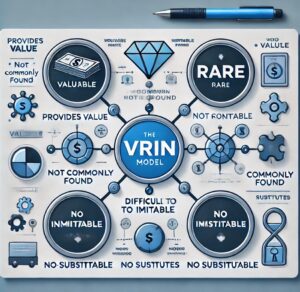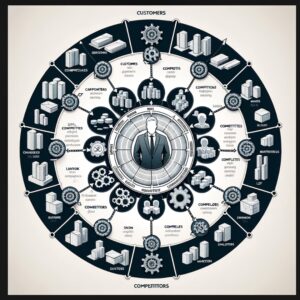Hoshin Kanri (Policy Deployment)

Hoshin Kanri, also known as Policy Deployment, is a strategic planning method used in management consulting to ensure that the strategic goals of a company drive progress and action at every level within that company. This Japanese management strategy, developed to improve and maintain organizational direction, involves a step-by-step planning, implementation, and review process.
Key Elements of Hoshin Kanri:
- Vision and Direction Setting: The process begins with top management establishing the organization’s vision and strategic objectives.
- Development of Strategic Objectives: These are long-term, broad goals aligned with the company’s vision.
- Breakdown of Annual Objectives: The strategic objectives are then broken down into specific, actionable, and measurable annual goals.
- Deployment to Departments: These annual objectives are further cascaded down to various departments and teams, ensuring that all levels of the organization are aligned with the strategic goals.
- Implementation and Regular Review: Regular reviews and adjustments are made to ensure the implementation is on track and aligned with the strategic objectives.
- Catchball Process: A unique feature of Hoshin Kanri, this involves a back-and-forth communication process (like a ball game) to ensure buy-in and consensus at all levels of the organization.
- Use of X-Matrix: A tool to visually map and align strategic objectives, tactics, accountabilities, and metrics.
Application in Management Consulting:
- Strategic Alignment: It ensures that strategic objectives are clearly communicated and understood at all levels, from top management to front-line employees.
- Performance Management: It aligns individual and team performance with the organization’s strategic objectives, enhancing overall performance.
- Change Management: The methodology supports effective change by involving all levels in the strategic planning process, fostering a shared understanding and commitment.
Similar Tools and Methodologies:
- Balanced Scorecard: Like Hoshin Kanri, it translates an organization’s strategy into a comprehensive set of performance measures. Unlike Hoshin Kanri, it uses four perspectives (financial, customer, internal business processes, and learning and growth) to monitor progress.
- Management by Objectives (MBO): A management model that aims to improve the performance of an organization by clearly defining objectives that are agreed upon by both management and employees.
- OKRs (Objectives and Key Results): Similar in focusing on goal setting and tracking, but OKRs are typically more flexible and less hierarchical compared to the structured approach of Hoshin Kanri.
- Total Quality Management (TQM): Focuses on long-term success through customer satisfaction and integrates fundamental management techniques, existing improvement efforts, and technical tools.
Hoshin Kanri is particularly effective in organizations seeking a disciplined, strategic approach to achieving long-term goals while ensuring that all employees are working towards the same objectives. It promotes a holistic view of strategy implementation, ensuring that there’s a clear line of sight from the top-level strategy to the day-to-day operations.



